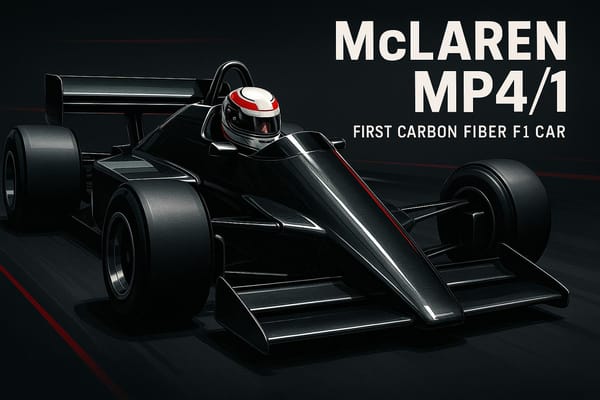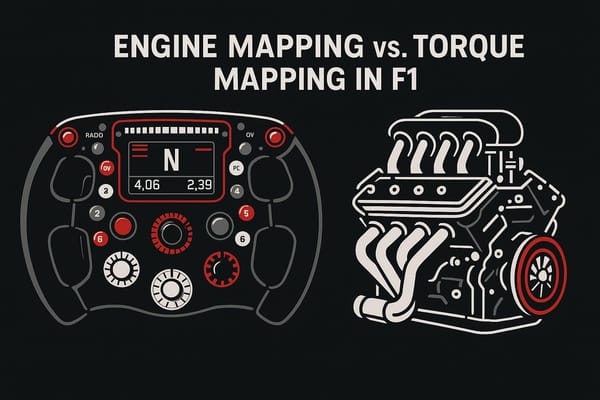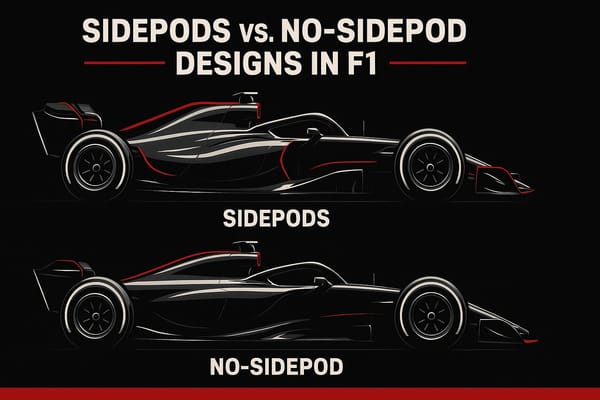How F1 Tracks Manage Organic Waste
Explore how Formula 1 tracks manage organic waste sustainably, contributing to the sport's ambitious 2030 net-zero carbon emissions goal.
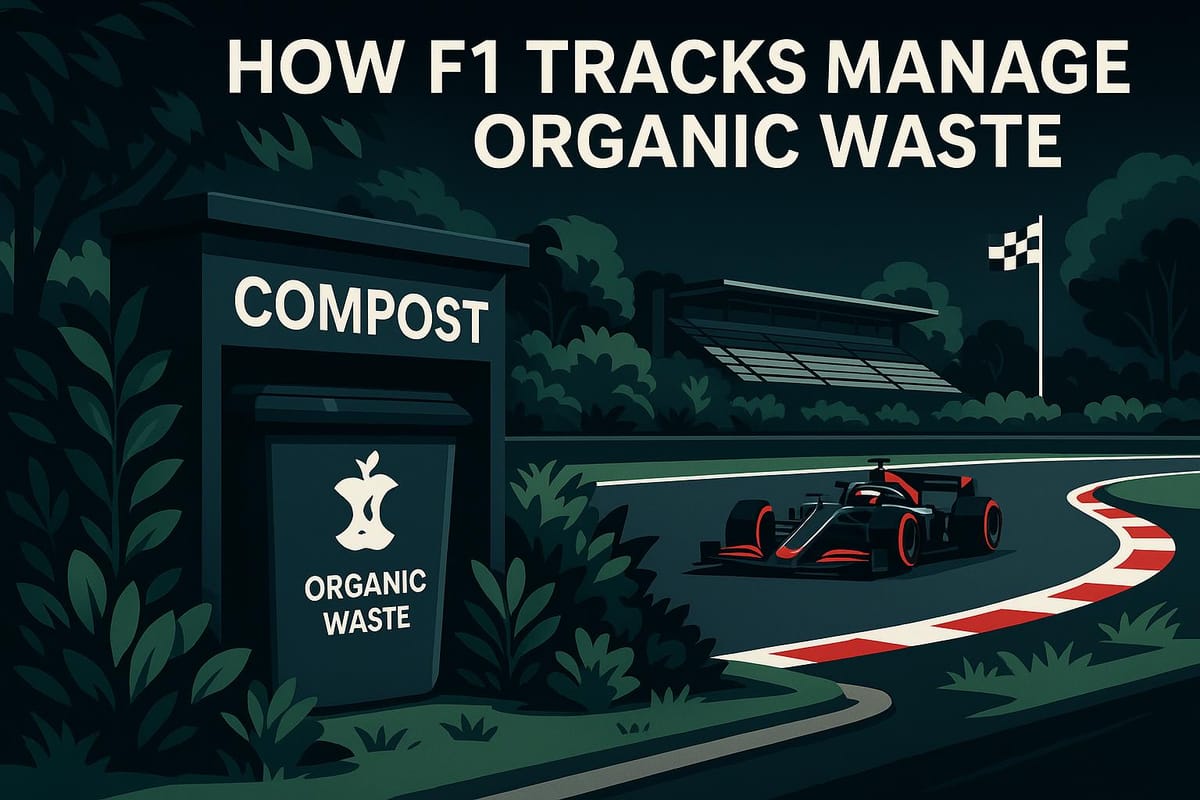
Formula 1 tracks produce large amounts of organic waste during race events, including food scraps and landscaping debris. To meet F1's 2030 net-zero carbon emissions goal, circuits have adopted efficient waste management strategies:
- Composting Systems: Advanced, temperature-controlled units convert food and organic waste into compost.
- Local Partnerships: Tracks collaborate with local waste processors for collection and recycling.
- Strict Rules: Banned single-use plastics, mandatory waste sorting, and use of recyclable or compostable materials.
- Innovative Solutions: Electric vehicles for waste transport, rapid composting, and AI-powered sorting systems.
These efforts help reduce landfill waste, create reusable resources, and improve sustainability at race venues.
What Makes Barcelona-Catalunya F1's Most Sustainable Circuit?
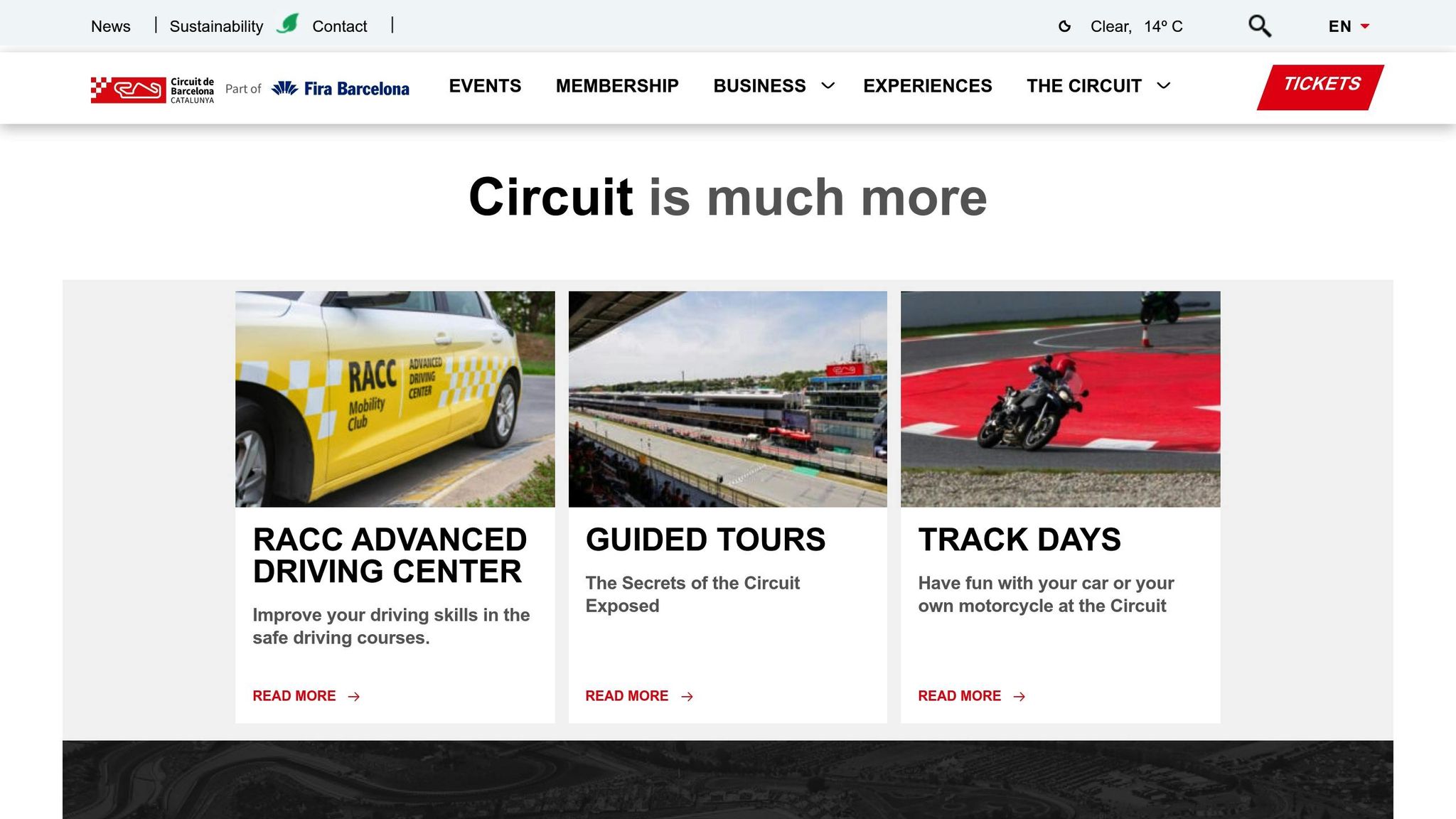
F1 Waste Management Rules
Formula 1 showcases its dedication to sustainability through detailed waste management regulations. These rules dictate how racing circuits manage organic and non-organic waste, setting clear targets and requirements that every venue must follow. Let’s dive into the key aspects of these regulations.
2030 Zero Carbon Target
F1’s waste management plan plays a crucial role in achieving its ambitious 2030 Zero Carbon goal. The strategy includes:
- Material Selection: Prioritize materials that are either recyclable or compostable.
- Waste Tracking: Monitor and report the amount of waste diverted from landfills.
- Energy Efficiency: Utilize renewable energy sources for waste processing.
A great example of these efforts took place during the 2021 Silverstone Grand Prix, where over 1.9 tons of food were donated to a local food bank. By 2024, the initiative also led to the reuse of more than 15,000 plates and bowls, saving over 60,000 liters of water in the process. These initiatives highlight the real-world impact of F1's zero-carbon commitment on race events. The outlined strategies are further reinforced through mandatory rules for each circuit.
Circuit Requirements
F1 circuits are held to strict standards to ensure sustainable waste management practices are embedded into their operations.
| Requirement Category | Specific Rules |
|---|---|
| Waste Sorting | Provide separate bins for compost, recycling, and landfill waste. |
| Banned Materials | Prohibit single-use plastics in trackside and hospitality areas. |
| Staff Gear | Ensure uniforms and gear are made from recycled materials. |
| Food Service | Use only compostable or recyclable serving items. |
These rules are far from theoretical - they are actively enforced at circuits worldwide. For instance, the Formula 1 Grand Prix du Canada has adopted robust measures, including composting organic waste, recycling suitable materials, and implementing water conservation practices.
In 2021, these efforts led to the recycling of over 140,000 plastic bottles used by staff and media. Additionally, F1’s collaboration with BWT, its Official Water Technology Partner, has introduced advanced water treatment systems that reduce reliance on single-use plastics. These comprehensive measures are pivotal in supporting F1’s mission to achieve net-zero carbon emissions by 2030.
How F1 Tracks Handle Organic Waste
Formula 1 circuits tackle the challenge of organic waste during race weekends with a mix of on-site composting systems and collaborations with local organizations. These efforts align with Formula 1's ongoing sustainability goals.
Track Composting Systems
Many F1 circuits have adopted industrial composting systems to manage food waste and other organic materials. These setups are designed to speed up decomposition and convert waste into compost efficiently, thanks to advanced, temperature-controlled units.
| System Component | Purpose | Implementation |
|---|---|---|
| Separation Stations | Sort waste at the source | Clearly labeled bins placed around the venue |
| Processing Units | Accelerate decomposition | Temperature-controlled chambers |
| Storage Facilities | Hold waste temporarily | Sealed containers to minimize odors |
| Transport Systems | Move processed materials | Specialized vehicles and equipment |
These systems not only manage waste on-site but also complement partnerships with local waste management services for any overflow.
Local Waste Partners
Circuits often extend their waste management strategies by working with local organizations. For example, the Formula 1 Grand Prix du Canada collaborates with local partners to ensure proper handling of organic waste during and after race weekends. These partnerships typically involve:
- Regular waste collection schedules during events
- Specialized transport for organic materials
- Long-term processing agreements
- Strict quality checks to avoid contamination
Circuit Success Stories
Some circuits stand out for their innovative approaches. The Las Vegas Grand Prix, for instance, has implemented extensive recycling programs and introduced plant-based food options to minimize the environmental impact of catering. Other circuits have teamed up with specialized waste processors to handle mixed organic waste and installed advanced systems to monitor waste diversion rates, helping them identify areas for improvement.
Common Problems and Fixes
Managing organic waste during F1 race weekends comes with its fair share of challenges. Here’s how circuits tackle these issues effectively.
Preventing Mixed Waste
To align with F1's environmental goals, circuits have adopted detailed sorting systems to minimize waste contamination:
| Challenge | Solution | Impact |
|---|---|---|
| Spectator Confusion | Color-coded bins with clear visual guides | Fewer contamination incidents |
| Language Barriers | Improved signage and multilingual staff | Better compliance |
| Food Service Areas | Staff training and active monitoring | Higher-quality waste separation |
For example, the Canadian Grand Prix enforces strict waste separation rules for food vendors. This not only improves sorting but also addresses related concerns like odors and pests.
Managing Smells and Pests
Odor and pest control are critical during race weekends to maintain a pleasant environment. Circuits implement several measures:
- Temperature-controlled storage to slow food waste decomposition.
- Sealed and locked containers to keep pests at bay.
- Strategically placed collection points, positioned upwind from spectator areas.
- Frequent waste collections during peak activity times.
These steps ensure that waste management doesn’t interfere with the race-day experience.
Moving and Processing Waste
Efficient logistics play a vital role in handling organic waste. At the Canadian Grand Prix, for instance, all-electric vehicles are used for waste collection. Advanced processing methods include:
-
On-Site Pre-Processing
Food waste dehydrators shrink waste volume by up to 90%, making transport easier and more efficient. -
AI-Powered Sorting
Advanced systems identify and remove contaminants early in the process, streamlining recycling efforts. -
Rapid Composting
Temperature-controlled composting units with managed aeration speed up decomposition while cutting methane emissions.
These innovative approaches contribute to F1's ambitious target of reusing, recycling, or composting 100% of waste by 2030.
Results and Next Steps
F1 tracks are making strides in waste management, with measurable reductions in waste and plans to push these efforts further as part of F1's 2030 Zero Carbon Target.
Waste Numbers and Results
Circuits have stepped up their game by processing organic waste more effectively. This reduces the amount sent to landfills and redirects materials for purposes like track maintenance and landscaping. While results differ from one venue to another, the data highlights impressive progress in diverting waste and improving resource use.
New Waste Processing Tools
New tools and techniques are speeding up waste processing. Advanced sorting systems and improved composting methods are key players here. Some circuits are even converting organic waste into resources like irrigation water, soil nutrients, or biogas to support track operations. These innovations are paving the way for even bigger achievements in waste management.
Future Waste Goals
Looking ahead, F1 circuits are setting their sights on ambitious waste management goals, including:
- Expanding closed-loop composting systems to cut landfill-bound organic waste to almost zero
- Boosting the use of recycled compost for on-site landscaping
- Adopting cutting-edge processing technologies
These efforts aim to not only meet F1's environmental promises but also make the most of available resources.
Conclusion
Formula 1 circuits are taking meaningful steps toward better handling of organic waste as part of their push to achieve the 2030 zero-carbon goal. Initial efforts like composting and recycling are already making a difference by cutting down waste and minimizing their footprint. Looking ahead, improvements in waste processing methods and closer collaboration with local communities will help fine-tune these initiatives. By continuing to innovate and work together, F1 circuits are not only honoring their environmental promises but also setting a new benchmark for sustainability in large-scale events.
FAQs
How do F1 circuits manage waste sustainably during major events?
F1 circuits have adopted detailed waste management strategies to tackle the significant organic waste produced during events. These measures often include composting food waste and biodegradable materials, placing clearly marked disposal stations throughout the venue, and teaming up with local recycling and composting facilities to manage waste effectively.
To maintain these practices, many tracks rely on sustainability teams or environmental consultants who oversee waste management efforts. They also focus on educating staff, vendors, and attendees about proper disposal methods. These initiatives help cut down on landfill waste while encouraging fans and participants to embrace more environmentally conscious habits.
How do local partnerships help F1 tracks manage organic waste effectively?
Local partnerships are key for F1 circuits aiming to handle organic waste responsibly. By teaming up with nearby composting facilities, waste management companies, and environmental groups, circuits can ensure that organic waste is processed effectively, transforming it into valuable resources like compost or bioenergy.
These collaborations also allow circuits to design waste management strategies that fit local regulations and infrastructure. This not only minimizes their environmental footprint but also supports sustainable practices in the surrounding communities.
How do F1 circuits handle organic waste to support the 2030 Zero Carbon goal?
F1 circuits are stepping up their waste management game to support the sport's ambitious goal of reaching net-zero carbon emissions by 2030. One key focus is on handling organic waste, like food scraps and biodegradable materials. Many tracks now compost this waste on-site or send it to specialized facilities, where it’s transformed into nutrient-rich compost. This approach not only cuts down on landfill waste but also helps reduce greenhouse gas emissions.
On top of that, several F1 venues are embracing eco-friendly practices. For example, they’re switching to biodegradable packaging and encouraging fans to separate their waste during events to make recycling easier. These measures are part of a larger push to integrate environmentally conscious practices into every corner of Formula One operations.

